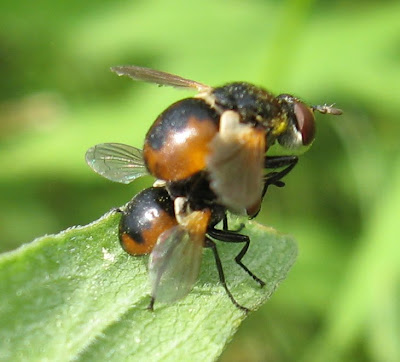At first I didn't know what to think of this fairly large (about 15 mm), long-legged fly found nectaring at Queen Anne's Lace. The wing venation pointed to a Tachinid, or possibly a Flesh Fly or Blow Fly ...


... but I didn't know what to make of the mouth parts. However, it seems that some tachinid flies do indeed have long beaks: this is Ptilodexia sp. and although not uncommon this was my first encounter with this species. The larvae are parasites of scarab beetles.


Tachinids are the second largest family in the order Diptera (a.k.a. flies ... di → two, ptera → wings). Tachinid fly larvae are often parasites of other arthropods, including insects inimical to human interests, making these flies "beneficial" from our viewpoint. A more typical tachinid, Panzeria sp., members of this widespread genus are parasites of various species of moths.



A mating pair of Gymnosoma sp., the larval host species are sheild bugs and stink bugs, and it's thought by some that the adults might be Batesian mimics of larval stinkbugs.

Another Batesian mimic: at first sight I mistook this Cylindromyia sp. for a wasp. This tachinid fly also parasitizes stink bugs.

Archytas sp. larvae feed on various species of moths ...

... whereas Juriniopsis sp. are more selective in their tastes, parasitizing moths of the family Arctiidae (Tiger, Lichen and Wasp moths).



